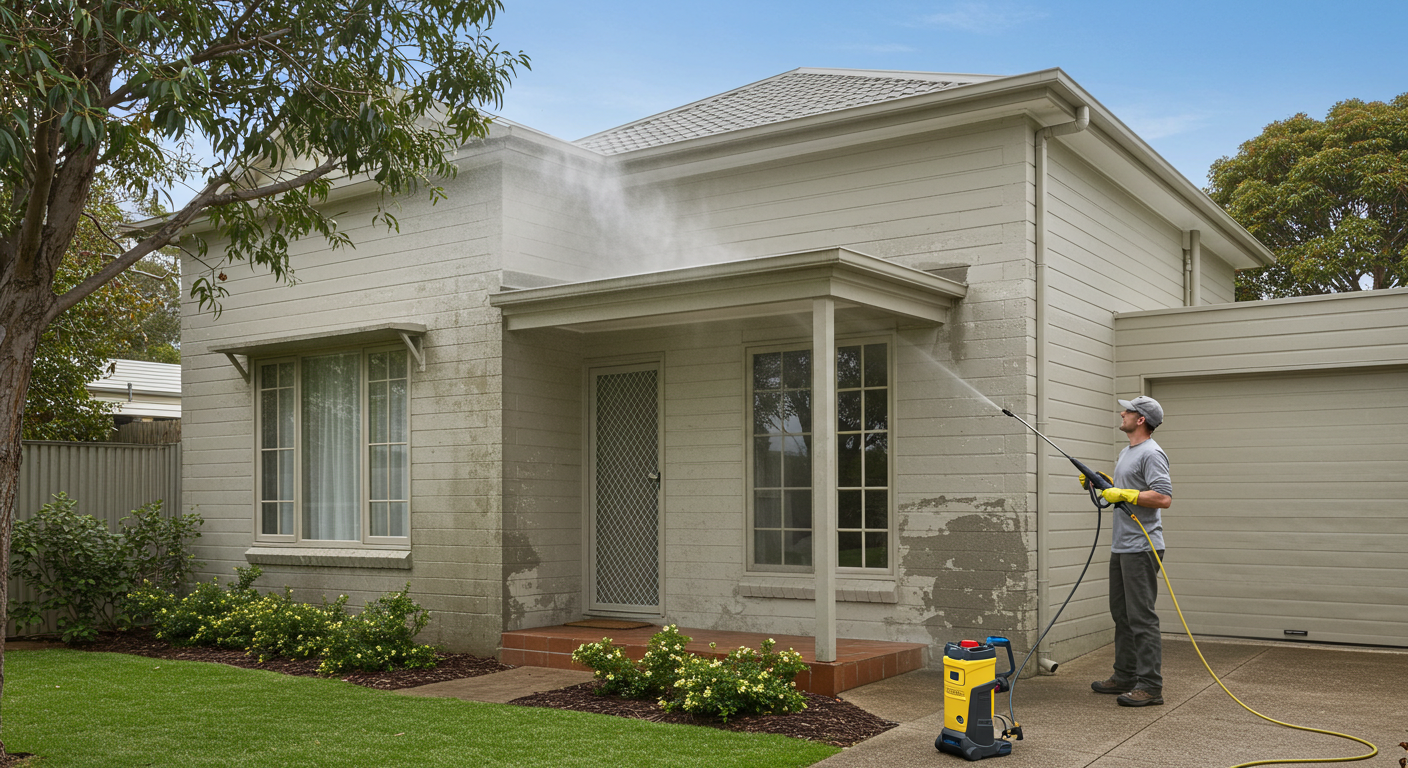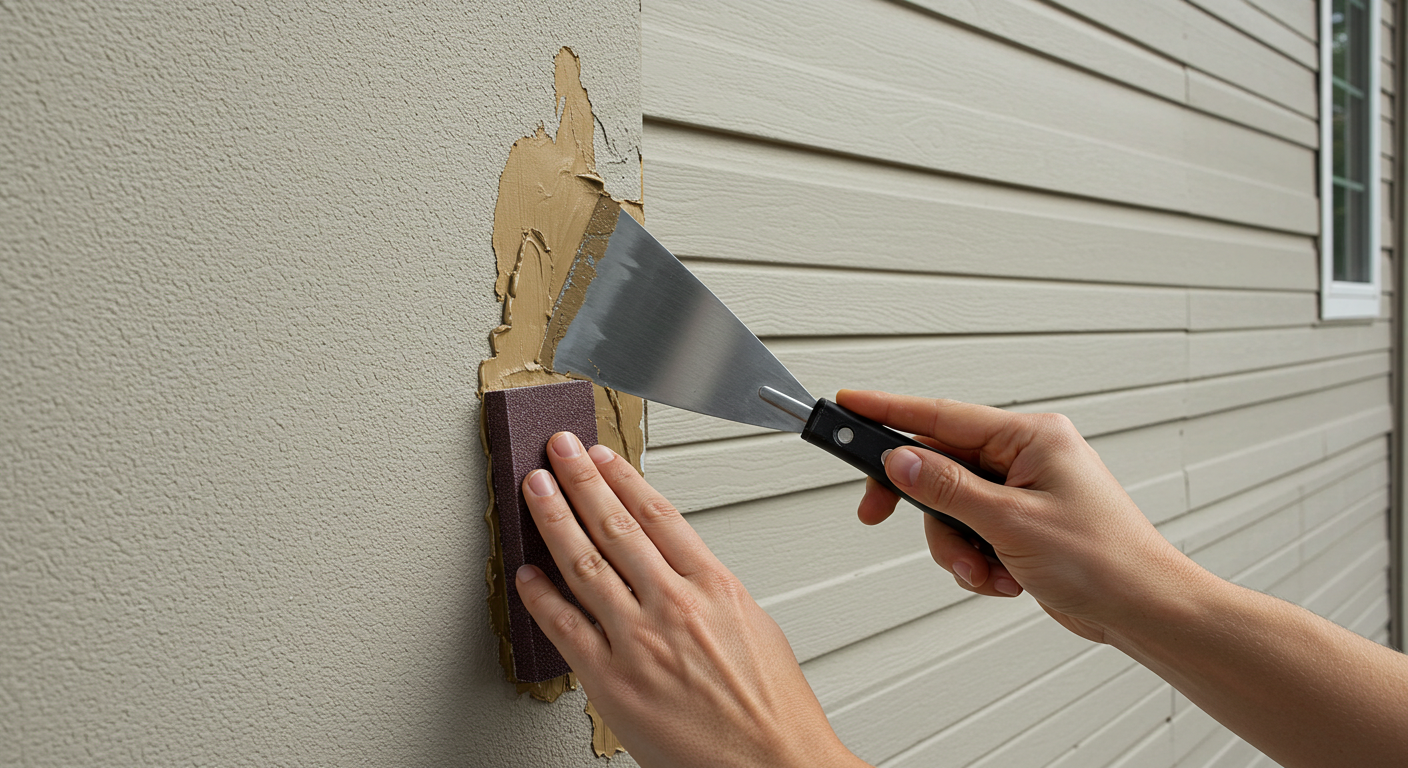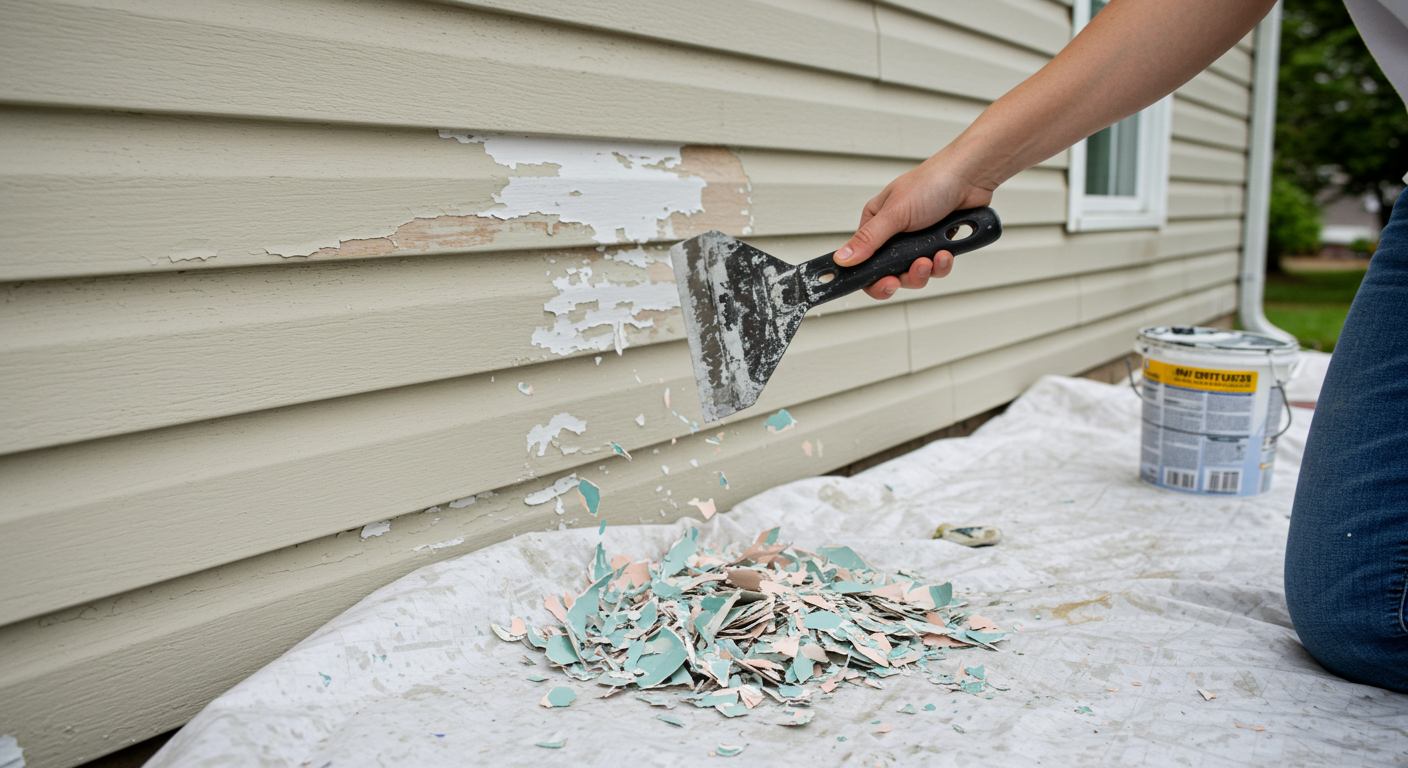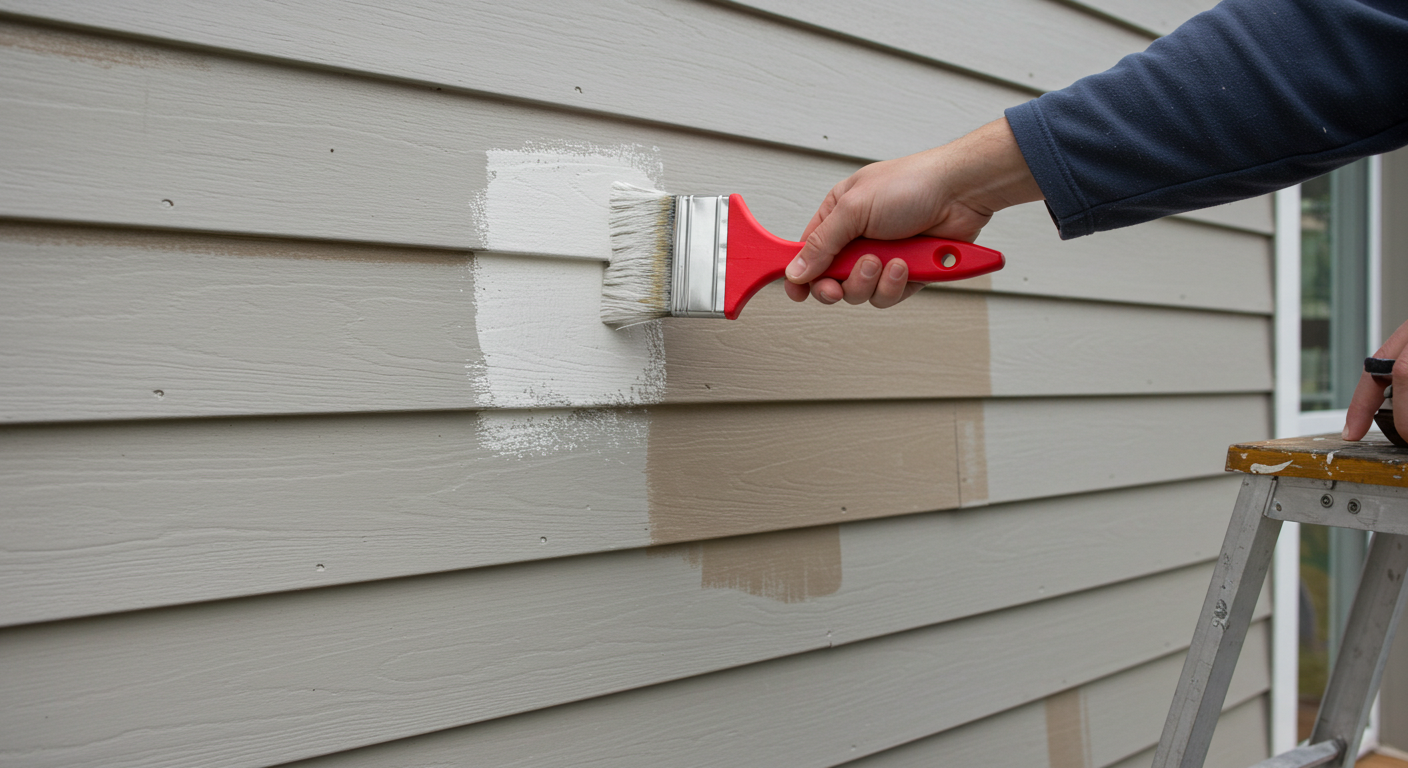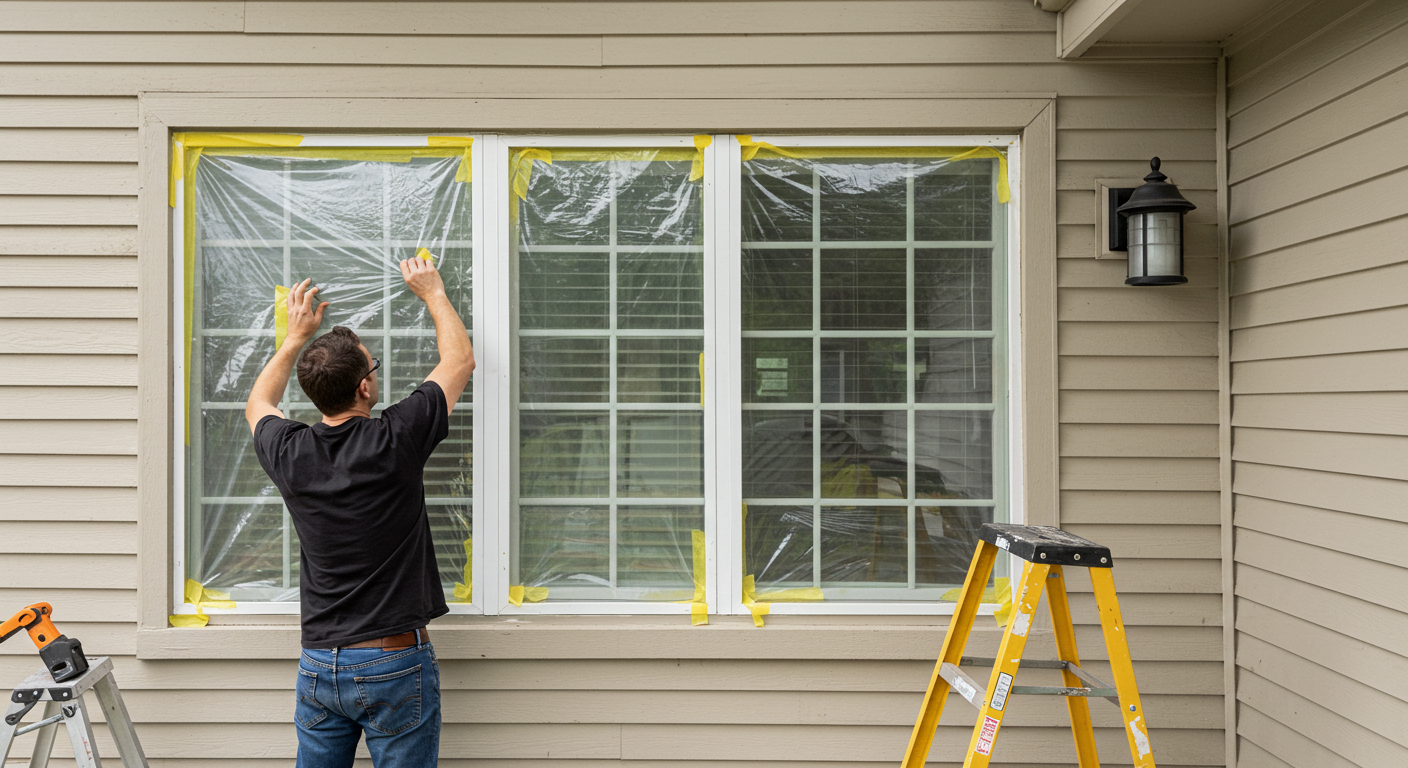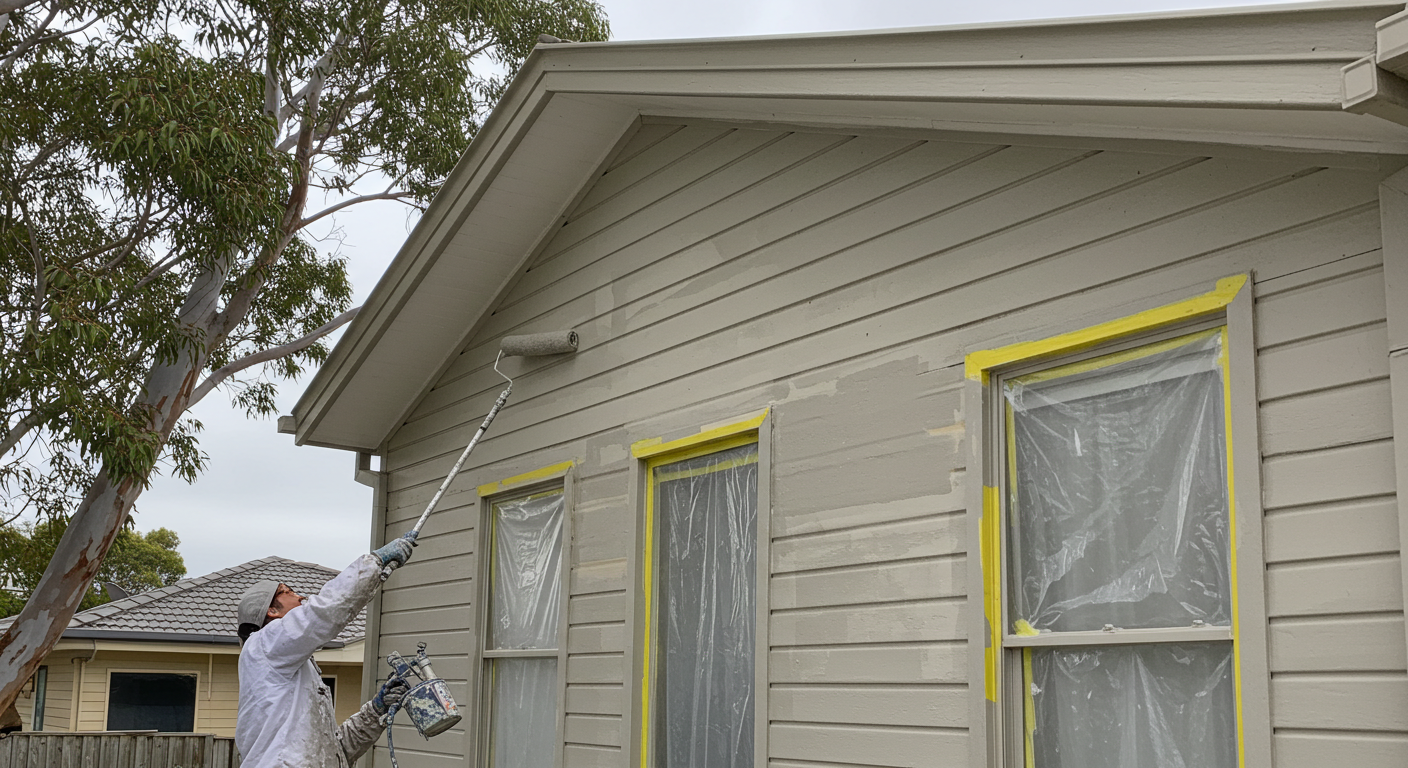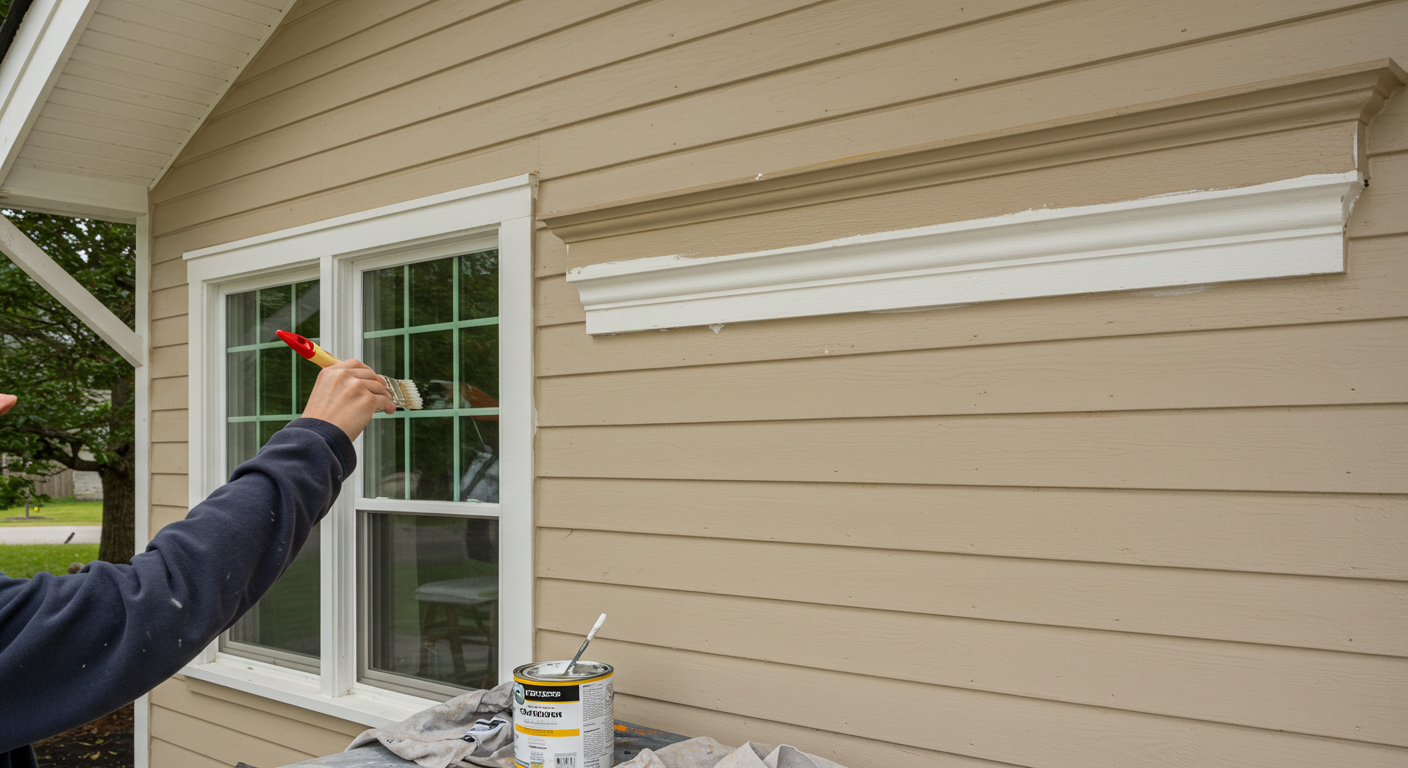Exterior Painting Perth: How to Paint Home Exterior Properly
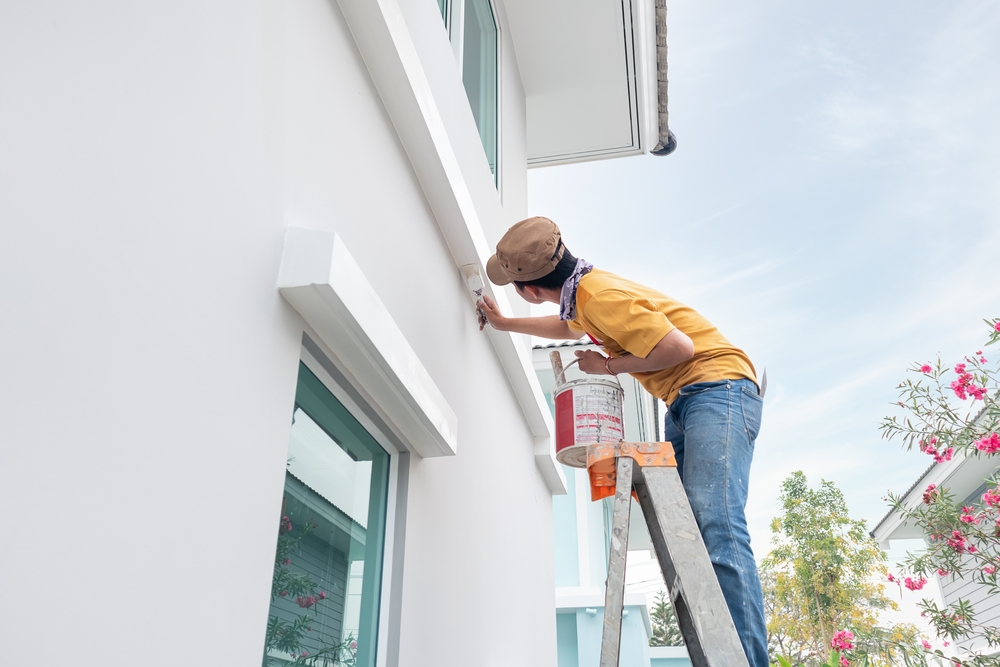
Your home should be the pride of the street. But is that once-vibrant exterior now dulled by chalky streaks, peeling patches, even mould or rot creeping in?
Perth’s harsh UV rays, sudden rainstorms, and salt-laden winds are unforgiving on exterior surfaces. If you wait too long, that flaking paint can lead to serious damage. And the damage goes deeper, leading to moisture intrusion and costly repairs.
Well, don’t worry. You don’t need to be a tradie to fix it.
This complete exterior painting guide will show you how to paint your home’s exterior in easy steps. We’ll also cover some tips for cold-weather painting, 2025 colour trends, cost estimates, and more.
Let’s explore the materials and steps you need for a flawless exterior paint job.
Essential Materials for Exterior Painting in Perth
Before you start painting, make sure you have all the right supplies on hand. Perth painters and paint brands recommend things like:
Material | Purpose / Use |
Exterior wall paint | For siding/walls, choose weather-resistant flat or eggshell finish |
Trim/door paint | For trims, doors, usually semi-gloss for durability and easy cleaning |
Pressure washer | Cleans dirt, dust, mildew from walls before painting |
Paint sprayer / rollers | Applies paint evenly over large surfaces |
Paint brushes | For detail work; edges, corners, trim |
Painter’s tape | Masks windows, doors, edges for clean paint lines |
Drop cloths / tarps | Protects plants, patios, and ground from paint drips |
Ladder / scaffolding | Safely reaches high areas and rooflines |
Paint scraper | Removes peeling or loose paint |
Sandpaper | Smooths surfaces and feather edges before painting |
Wood filler | Fills holes or cracks in timber or stucco |
Exterior primer | Seals bare surfaces or stains for better paint adhesion |
Exterior caulk | Seals gaps between trim, walls, windows & doors to prevent moisture entry |
How to Paint Your Home Exterior the Right Way: 8 Easy Steps
Follow these steps in order to prep and paint your house exterior for the best, longest-lasting results. Each step matters, so take your time and work methodically from start to finish.
Step #1: Wash Exterior Walls with a Pressure Washer
Start by washing the entire exterior with a pressure washer. This removes dirt, dust, and mildew. It gives paint something clean to stick to. Perth painters use this method for exterior prep. Add a cleaning solution in the washer, then spray from the top down. Work in smooth, overlapping passes so you don’t miss any spots. Let the house dry completely before moving on.
Step #2: Repair Any Cracks, Holes, or Damaged Surfaces
Walk around and inspect every wall, trim and siding. Look for rot, holes or deep cracks in wood, stucco or masonry. Use an epoxy wood filler or concrete patch to fill holes and gaps. Then smooth it with a putty knife.
Once the filler cures, lightly sand it flush. Fixing damage now ensures the new paint will cover evenly and that rotting sections won’t spread under the paint.
Step #3: Remove Loose or Peeling Paint
After repairs and once everything is dry, find any flaking or peeling paint. Spread drop cloths on the ground to catch chips. Then scrape off all loose paint with a metal scraper or sand paper. Make sure to get down to solid substrate. Any chipped edges should be feathered smooth.
Removing loose paint is essential. New paint only adheres well to firm, sound surfaces. Once you’ve scraped, lightly sand the area and wipe away dust.
Step #4: Seal Gaps Around Trim, Windows, and Doors
Now seal everything tight. Use exterior-grade caulk and a caulking gun to fill gaps between siding and trim, around windows, doors, corners and any joints.
Caulking prevents water intrusion and gives a crisp painted edge. Don’t forget corners and butt-joints on trim boards. Allow the caulk to cure per manufacturer instructions (usually a few hours).
Step #5: Prime Stains and Bare Surfaces for Better Coverage
Any dark stains, knots in wood or bare patches should be sealed with primer. Apply a coat of high-quality stain-blocking primer over these areas with a brush. This stops tannins or old stains from bleeding through and ensures even topcoat colour.
Also prime bare patches left by scraping or where filler was used. In one coat of primer, you’ll create a uniform base. Wait for the primer to dry completely before painting.
Step #6: Protect Fixtures, Doors, and Windows with Tape and Sheeting
Cover anything that shouldn’t be painted. Use painter’s tape and plastic sheets to mask off windows, doors, light fixtures and vents.
Taping edges cleanly will save you sanding later. You can also remove light fixtures or house numbers entirely if possible.
Step #7: Apply Exterior Paint from Top to Bottom
Load your chosen exterior wall paint (flat or eggshell latex) into a sprayer or brush/roller. If you’re changing from a light to dark colour (or vice versa), a coat of primer or a tinted base coat is advised.
Paint the siding starting from the top and working down. Spray or roll in smooth vertical strokes. Overlap each pass to avoid streaks.
Most projects need two coats of finish paint for full coverage (especially when covering old colour). Let each coat dry fully before applying the next.
Step #8: Paint the Trim, Doors, and Finishing Details
Once the walls are done, switch to the semigloss paint for wood trim and doors. Remove the plastic covering from protected areas. Using a brush, apply two coats of trim paint to window frames, fascia, doors and decorative woodwork.
Semigloss is ideal here because it’s easy to clean. After the second coat dries, carefully remove all tape and drop cloths.
Step back and admire your refreshed exterior!
Read more tips: Exterior Home Painting for Perth Homeowners
Tips for Exterior House Painting in Cold Weather
Perth’s winters are mild, but painting in cold conditions still needs planning. Only paint your exterior when the weather is dry and not too cold; ideally above 10–15°C.
Here are quick tips:
- Only paint when at least 2–3 dry days are forecast with no rain. Avoid wet or frosty mornings.
- Paint in late morning to early afternoon (around 10am–2pm) when temperatures are highest. This ensures faster drying.
- If any rain, dew or condensation has fallen, wait until walls are completely dry before painting. Moisture causes adhesion problems.
- Choose premium acrylic latex paints rated for cooler temperatures. Many work down to 10°C. These remain flexible in cold weather.
- Avoid windy or shaded areas as they stay damp longer. Try to paint parts of the house that get sun and shelter from strong breezes first.
- Cold air slows drying. Allow extra time between coats; maybe a full day if it’s around 10–12°C. A moisture meter can confirm dryness.
Exterior Paint Trends in 2025
Exterior house painting trends for 2025 are moving toward nature-inspired palettes.
Homeowners are favouring warmer neutrals over stark white or grey. Think sophisticated taupes, sandstones and beige or greige tones. These warm neutrals are paired with crisp white trims and architectural details to brighten the look.
For accents, deep blues and inky blacks are popular choices. A navy front door against warm siding creates a modern, eye-catching contrast.
Earthy greens are also on the rise. Soft sage and olive house colours bring a calm, organic feel that blends with gardens. Crisp whites or light grey trims complement green siding nicely.
Bold colours like bright teal, mustard yellow or burnt orange doors, can add personality. Such vibrant accents should be used sparingly and contextually.
Overall, 2025 favours grounded, layered colour schemes; warm neutrals as the base, paired with crisp whites and subtle bold accents for interest.
Exterior Painting Cost in Perth
How much will it cost to paint your home’s exterior? In Perth, professional house painting prices range from $3,000 to $30,000 for a complete exterior paint job. The exact figure depends on your house size, materials and condition.
Key factors that influence the price include:
- House Size: More walls and higher elevations mean more paint and labour.
- Prep and Equipment: Extensive prep work (scraping, sanding, filling) adds time and cost.
- Crew and Time: More painters or a longer timeline increases labour costs.
- Surface Condition: If your siding or trim is badly weathered, expect higher cost for repairs and priming.
- Paint Type and Colour: Premium, long-life paints cost more up front but can save money over time. Also, dramatic colour changes (light-to-dark or vice versa) need extra coats or primer which increases material costs.
- Desired Finish: Specialty finishes e.g. textured coatings, high-gloss enamel, or eco-friendly low-VOC paints can be pricier than standard latex.
To get an accurate quote, a professional will consider all these factors. Remember: investing in quality painting and prep today means your exterior will last much longer.
Worried your weather-worn siding and peeling paint are ruining your home’s look?
Reach out Final Touch Paint & Décor for Fresh, Flawless Exterior Painting
We offer professional and reliable painting services in Perth. Our specialised painters use long-lasting, eco-friendly paints and industry-best techniques to deliver comprehensive painting solutions that protect your home.
With Final Touch & Décor, you’ll enjoy a beautiful exterior that stands up to Perth’s climate.
Ready to love your home’s new look?
FAQs
- What is the average cost of exterior house paint in Perth?
Painting a typical Perth home’s exterior usually runs between $3,000 and $30,000, depending on home size, prep needed and material. Extra prep or premium paint will increase the price.
- What’s better: spray or roll exterior paint?
Rolling the paint on is mostly preferred for a thicker, more consistent finish. It’s easier to control and avoids overspray. Spraying is faster over large areas. But it’s harder to avoid paint drifting everywhere. Many painters spray broad surfaces and then “back-roll” them to even out the coat.
- What’s the best paint for exterior?
For exteriors, water-based acrylic paints are widely recommended. These formulas remain flexible in heat, resist mildew and allow moisture to escape, which prevents peeling. A high-quality acrylic exterior paint will give you excellent durability, colour retention and UV resistance.
- What’s the best paint colour for a home exterior?
While “best” depends on your home style, designers currently love warm neutrals and natural tones. Greige (a grey-beige), sandstone and taupe shades are trending, paired with crisp white trim. Pick a colour that suits your architecture and landscape. Just know that warm greys, off-whites and muted greens are very in-style right now.
- How many coats of paint should go on the exterior of a house?
For best longevity, plan on two finish coats of paint (plus primer) on the exterior. If you’re changing colour or painting a heavily weathered area, two coats ensure full, even coverage. If you’re only refreshing the same colour on a well-prepped surface, one quality coat might be enough on sheltered sides. However, two coats give extra protection and uniformity, especially in harsh Perth sun.
Read related blog post next: How to Paint Your Wooden Fence

